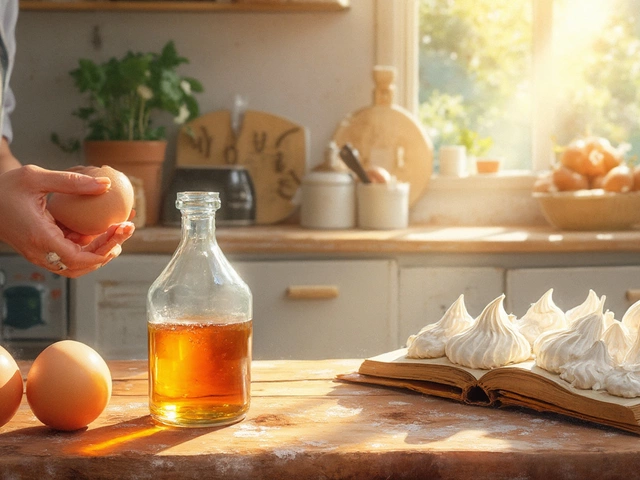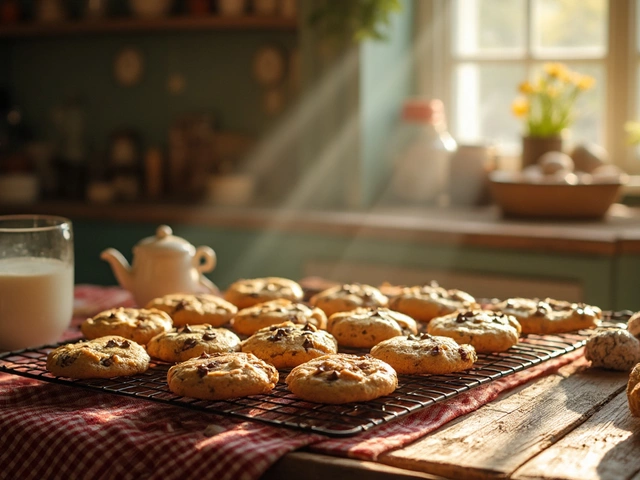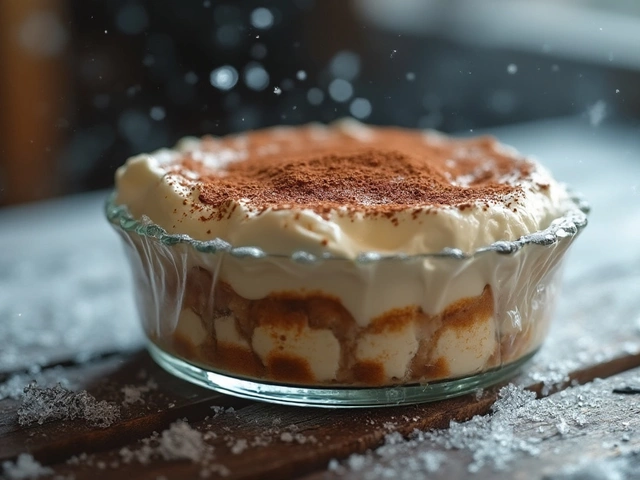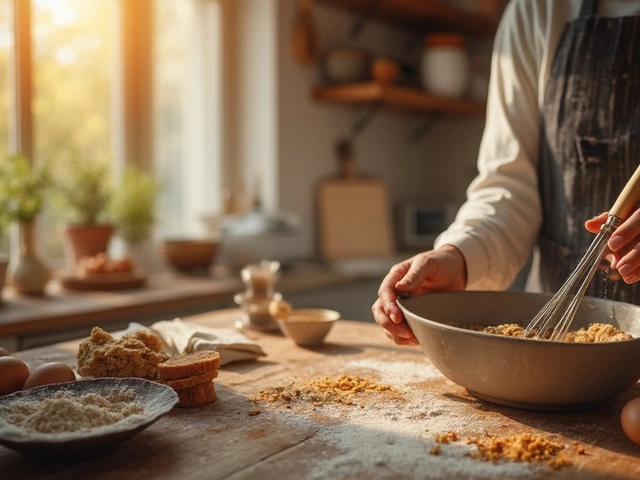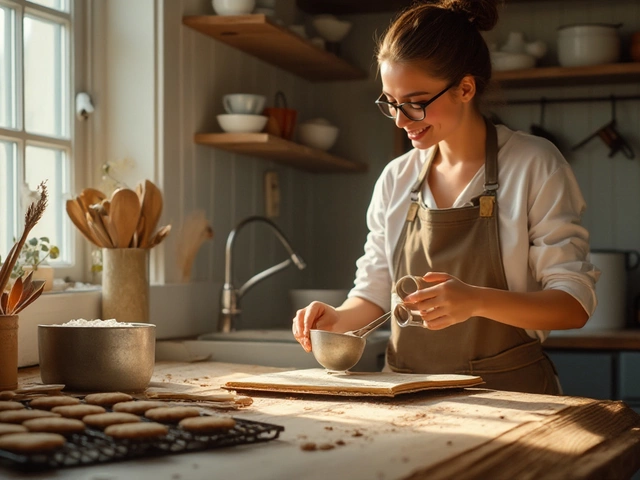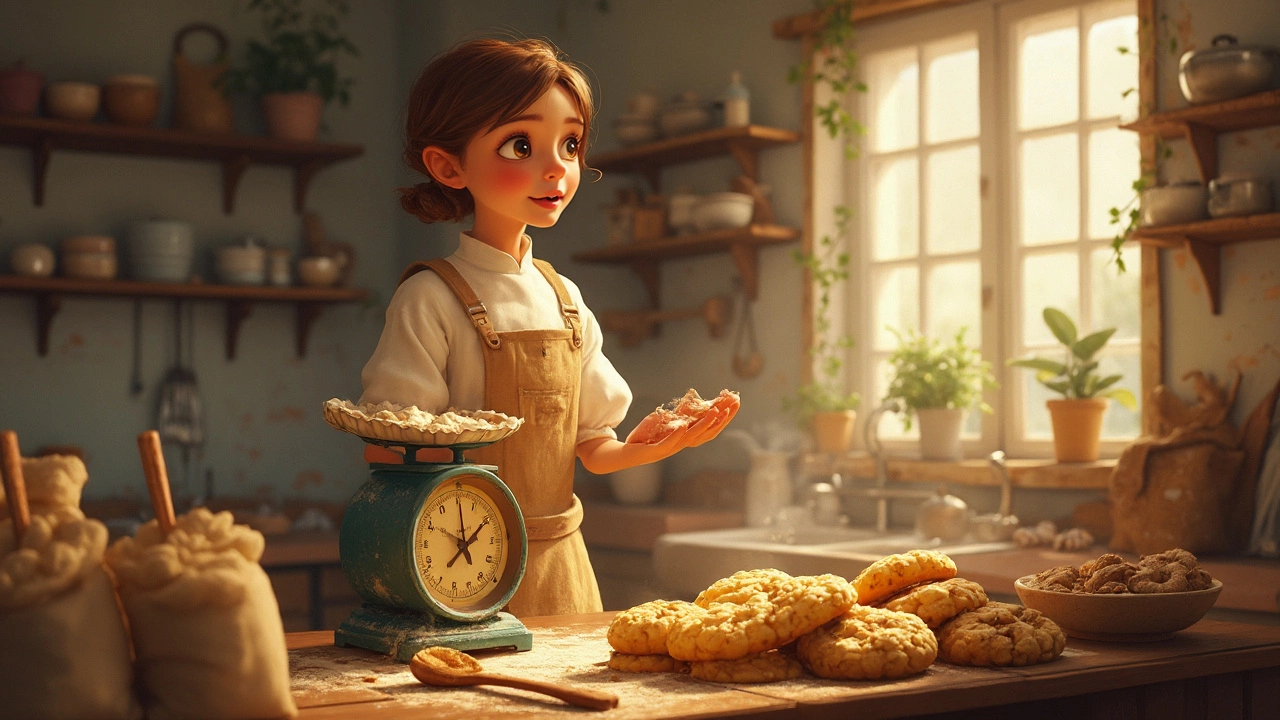
Okay, let's clear up a common cookie conundrum: is pure vanilla cookie blind? It might sound like a riddle, but this has less to do with literal blindness and more with perception, especially in baking terms. The so-called 'blind cookie' notion suggests that a vanilla cookie, stripped of visual distractions like chocolate chips or sprinkles, forces us to focus purely on its taste and aroma.
So why does this myth exist? Vanilla cookies are all about subtlety. Without flashy add-ons, these cookies rely heavily on quality ingredients and precise techniques. Mastering them can be a real art form, and yet it's this simplicity that makes them perfect for experimenting.
Thinking about baking some? A couple of things are crucial: first, using fresh vanilla ensures a rich taste, and secondly, managing your bake time can make the difference between soft and crunchy cookies. And here's a thought: next time you bite into a pure vanilla cookie, take a moment to appreciate the craftsmanship behind its seemingly simple allure.
- The 'Blind' Cookie: Fact or Fiction?
- Perfecting Your Vanilla Cookie
- History of Pure Vanilla Cookies
- Science Behind Baking: Ingredients Matter
- Tips for the Perfect Homemade Cookie
The 'Blind' Cookie: Fact or Fiction?
The notion of the 'blind cookie' can be delightful yet misleading. Let's break it down to understand why pure vanilla cookies might be considered 'blind.' This doesn't mean they lack vision—cookies don't need eyes, after all—but rather it refers to their unadorned, natural state. When you whip up a batch of pure vanilla cookies, there are no visible distractions like nuts or chocolate chunks.
This brings us to the main question: why label them 'blind'? It's all about focus. These cookies invite you to zero in on their flavor and texture. Does this mean they're easy to make? Not quite. Pure vanilla cookies can be as tricky as a complex cookie recipe because they spotlight the ingredients and baking skills involved.
Relying on Taste and Aroma
Without flashy add-ons, the challenge lies in achieving the perfect balance of sweetness, creaminess, and that unmistakable vanilla essence. This is where the concept of a 'blind' cookie turns into a genuine test of expertise. With their subtle hints and textures, they become a canvas for your baking skills. Are you choosing high-quality vanilla extract? Are your baking times precise enough to achieve the desired consistency?
Busting the Myths
Now, let's address some rumors around these cookies. Do homemade cookies really need to be guilded with chocolate or frosting to be called delicious? Definitely not! In fact, many fine bakers and home cooks appreciate the elegance and simplicity that homemade cookies like these offer.
A Sneak Peek into Cookie Science
To give you a taste of just how precision-based baking can be, consider this: add a bit too much flour, and your cookies stiffen up faster than you can say 'crunch.' On the flip side, too little sugar might leave them lacking that sweet finish. This sensitivity to ingredient ratios is a highlight of what makes 'blind' cookies all the more special.
So next time, when you hear someone refer to a cookie as 'blind,' remember this fascinating dive into the world of vanilla wonders. It's less about a lack of vision and more about appreciating the finer details of baking.
| Ingredient | Effect on Cookie |
|---|---|
| High-Quality Vanilla | Richer flavor |
| Extra Baking Time | Crisper texture |
| Exact Sugar Levels | Perfect sweetness |
Perfecting Your Vanilla Cookie
So, you're ready to bake the perfect pure vanilla cookie? Great! Let's roll up our sleeves and dive into the practical tips that will have you baking like a pro in no time.
Choose Quality Ingredients
The foundation of any good cookie starts with the ingredients. Always opt for high-quality vanilla extract—it’s what gives the cookie its signature flavor. Splashing some real vanilla into your mix can turn an average batch into a culinary delight. Also, don't skip on the butter; unsalted is best because it lets you control the saltiness of your cookie.
Master the Mixing
The right mixing technique can make a huge difference. Creaming the butter and sugar well is crucial—it should be light and fluffy. This not only helps incorporate air, resulting in a lighter cookie, but it also ensures an even distribution of sugar for consistent sweetness.
Baking Time and Temperature
Getting the baking time right can be tricky, but it’s key. Preheat your oven to the exact temperature—350°F (175°C) is often spot-on for vanilla cookies. Bake until the edges are golden brown, but not too long as you want the center to stay soft. Usually, 10-12 minutes does the trick.
Let Them Cool
Once they're out of the oven, let them cool on the baking sheet for a few minutes. This helps them set. Moving them to a wire rack allows them to cool completely and keeps their texture perfect—crispy edges and a soft, chewy center.
Troubleshooting Common Issues
- Too Flat: Check that your baking soda or powder isn’t expired, and be sure to chill your dough if needed.
- Too Hard: Make sure not to overbake, and always use the correct flour measurement.
- Lack of Flavor: Amp up the vanilla extract or consider adding a pinch of sea salt for contrast.
There you have it! With these simple, practical tips, your homemade vanilla cookies are bound to impress. Happy baking!
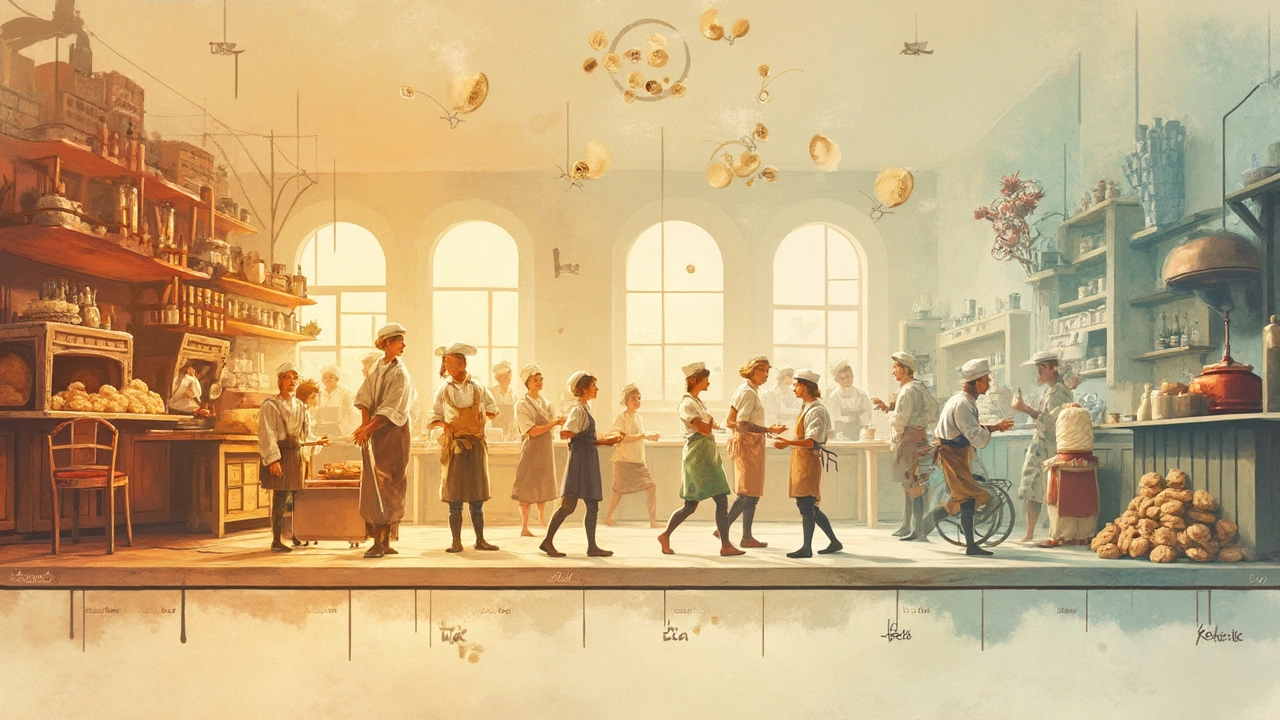
History of Pure Vanilla Cookies
Let's take a trip back in time and discover where pure vanilla cookies got their start. These tasty treats have a surprisingly rich history, stretching back much further than you might think.
The journey of vanilla cookies begins with the spice itself. Vanilla was first introduced to Europe in the early 1500s by Spanish explorers who brought it from Mexico. Initially, it was used more for chocolate drinks among the elite than for baking.
The Cookie Evolution
By the 18th century, the popularity of cookies began to rise as refined sugar became more accessible. Bakers started experimenting, leading to the creation of the vanilla-flavored versions we enjoy today. The simple combination of butter, sugar, and vanilla was a hit, favored for its classic and unpretentious taste.
With the industrial revolution in the late 19th century, baking became more efficient, and vanilla cookies turned into a household staple. This was a time when recipes spread more quickly through cookbooks and magazines, standardizing what we consider a 'pure vanilla cookie' today.
Modern Day Popularity
In recent decades, these cookies remain a beloved choice for many, especially during baking seasons like holidays. They are often a test of a baker's skills due to their seemingly simple nature. Interestingly, according to a 2023 baking survey, pure vanilla cookies ranked as the third favorite homemade cookie in the UK, right after chocolate chip and oatmeal raisin.
The charm of homemade cookies like vanilla lies in their nostalgic flavor, often reminding people of childhood kitchens and family gatherings. As you nibble on a cookie today, you're partaking in a bit of history—a sweet, vanilla-scented slice of the past.
Science Behind Baking: Ingredients Matter
The magic of baking is more like a chemistry class than a cooking one. Each ingredient in a pure vanilla cookie has a specific role that’ll either make or break your bake. Understanding these roles can improve not only your cookies but your entire baking game.
Flour: The Foundation
First up, flour. This is the backbone of your cookie. Most recipes call for all-purpose flour, which has just the right protein content to give you a chewy yet sturdy result. Want a softer cookie? Try using cake flour. It has lower protein, resulting in a more tender bite.
Sugar: Sweetness and Texture
Let’s talk sugar. It’s not just for sweetness—there’s a science to this granular goodness. Brown sugar contains molasses, which adds moisture and chewiness. White sugar, on the other hand, makes cookies crispier. Finding the right balance can change everything about your cookie’s texture.
Butter: The Flavor Booster
Butter is the unsung hero. Its fat content determines how your cookie spreads and adds a rich flavor we all love. Room temperature butter is key for a fluffy texture, as it traps air when you cream it with sugar. Softened—not melted—is the way to go.
Vanilla: The Star Ingredient
Now for the star: vanilla. Using pure vanilla extract is non-negotiable if you're going for that standout flavor. Imitation vanilla might save you a few quid, but trust me, your taste buds will notice the difference.
- Pure Vanilla Extract: Richer flavor, derived from real vanilla beans.
- Imitation Vanilla: Mostly synthetic, with a weaker taste compared to its pure counterpart.
If you’re keen, here’s a neat stat: According to recent baking data from 2023, over 85% of home bakers found that using pure vanilla extract in cookies resulted in tastier outcomes.
Remember, each ingredient works best when used intentionally. So the next time you whip up a batch of homemade cookies, you’ll know exactly which ingredient to tweak for that perfect bite. Now, who's ready to elevate their vanilla cookie game?
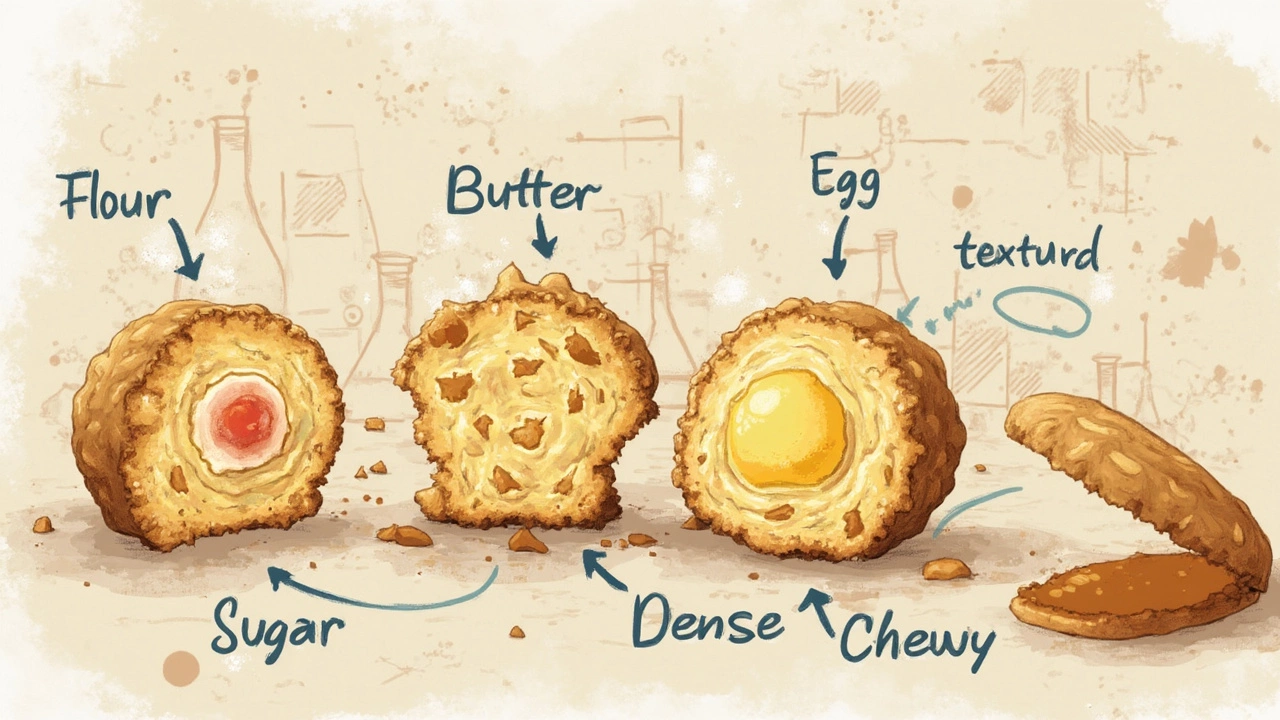
Tips for the Perfect Homemade Cookie
If you're on a quest to make the ideal pure vanilla cookie, you've come to the right place. Getting that soft, chewy, and flavorful bite is easier than you might think, and we're here to help you out with some useful tips.
1. Quality Ingredients are Key
First and foremost, use high-quality ingredients. Opt for real butter, fresh eggs, and of course, premium vanilla extract. A top-notch vanilla will elevate your cookie from good to outstanding.
2. Chill That Dough
Don't skip chilling your dough. Here’s the kicker: letting it sit in the fridge for at least an hour (or even overnight) allows the flavors to meld and helps the cookies keep their shape. This step is essential for the perfect homemade cookie.
3. Watch Your Measurements
Baking is a science. Too much flour or butter can throw off the texture. Make sure you measure your ingredients with precision. Using a kitchen scale can help ensure accuracy.
4. Baking Time and Temperature
Preheat your oven properly—always do this to ensure even baking. Keep an eye on your cookies during the final minutes. They should be lightly golden around the edges.
5. Experiment with Add-Ins
While pure vanilla cookies have their charm, feel free to get creative if you wish. You can stir in nuts or a hint of spice, like cinnamon, to introduce new flavors.
Quick Look: The Cookie Baking Process
| Step | Action | Duration |
|---|---|---|
| 1 | Mix Ingredients | 15 minutes |
| 2 | Chill Dough | 1 hour |
| 3 | Bake | 10-12 minutes |
| 4 | Cool | 5 minutes |
These tips should set you on the right track to baking up the perfect batch of homemade cookies. With practice and patience, you’ll become a cookie-baking maestro. Now, go preheat that oven and enjoy the process!

